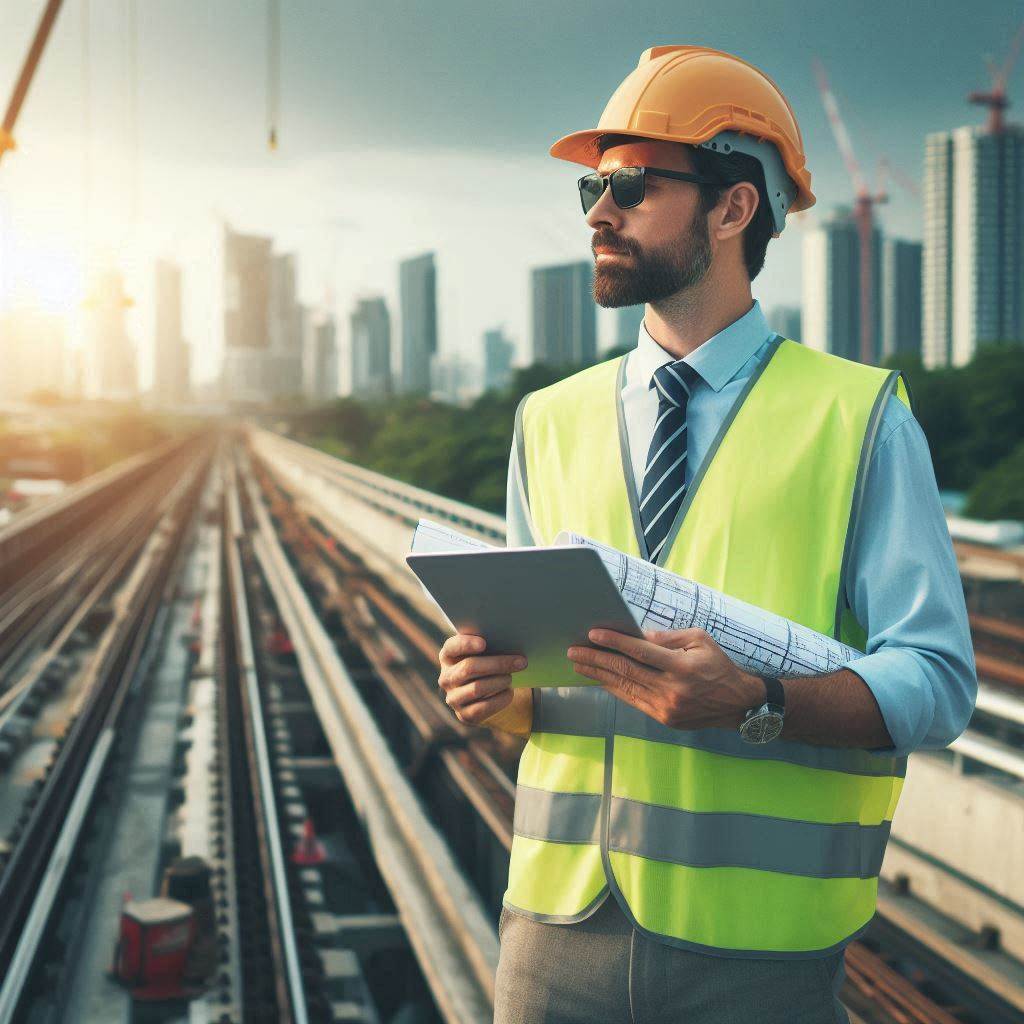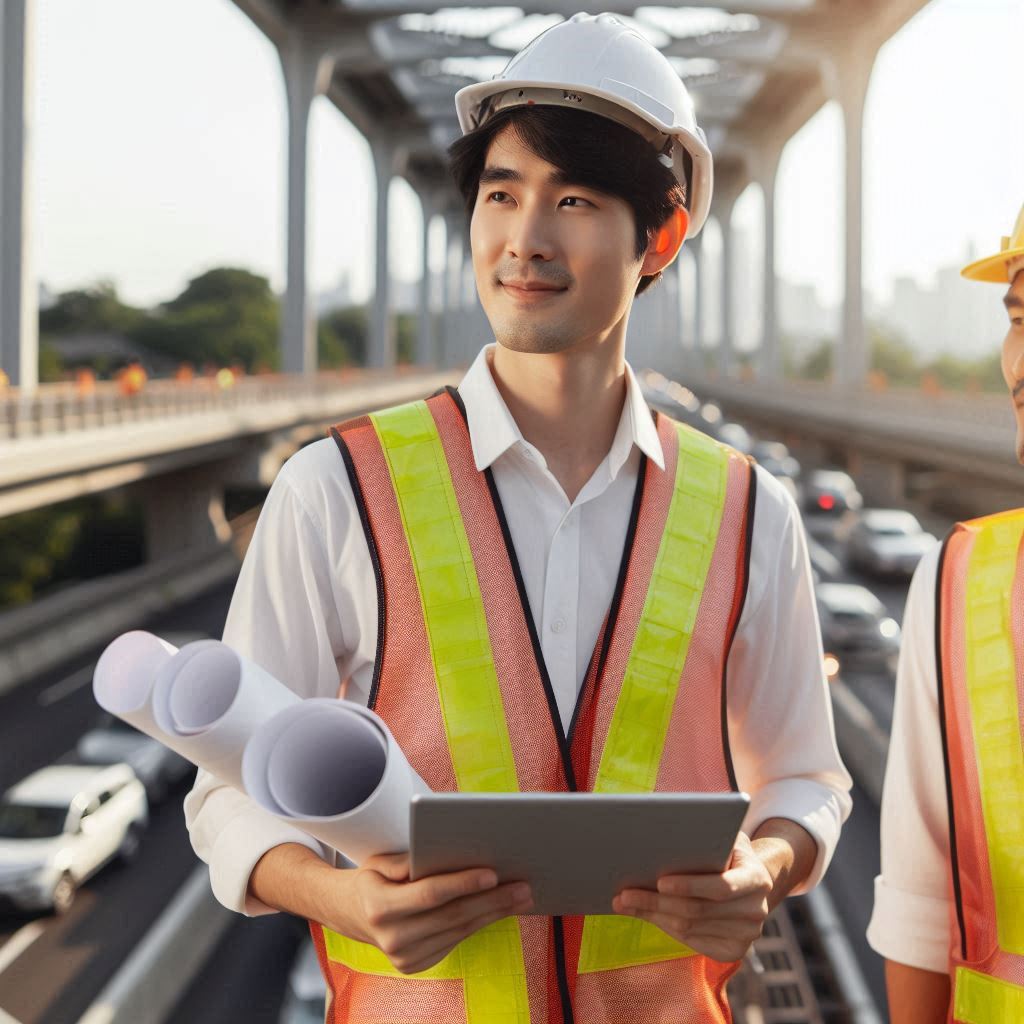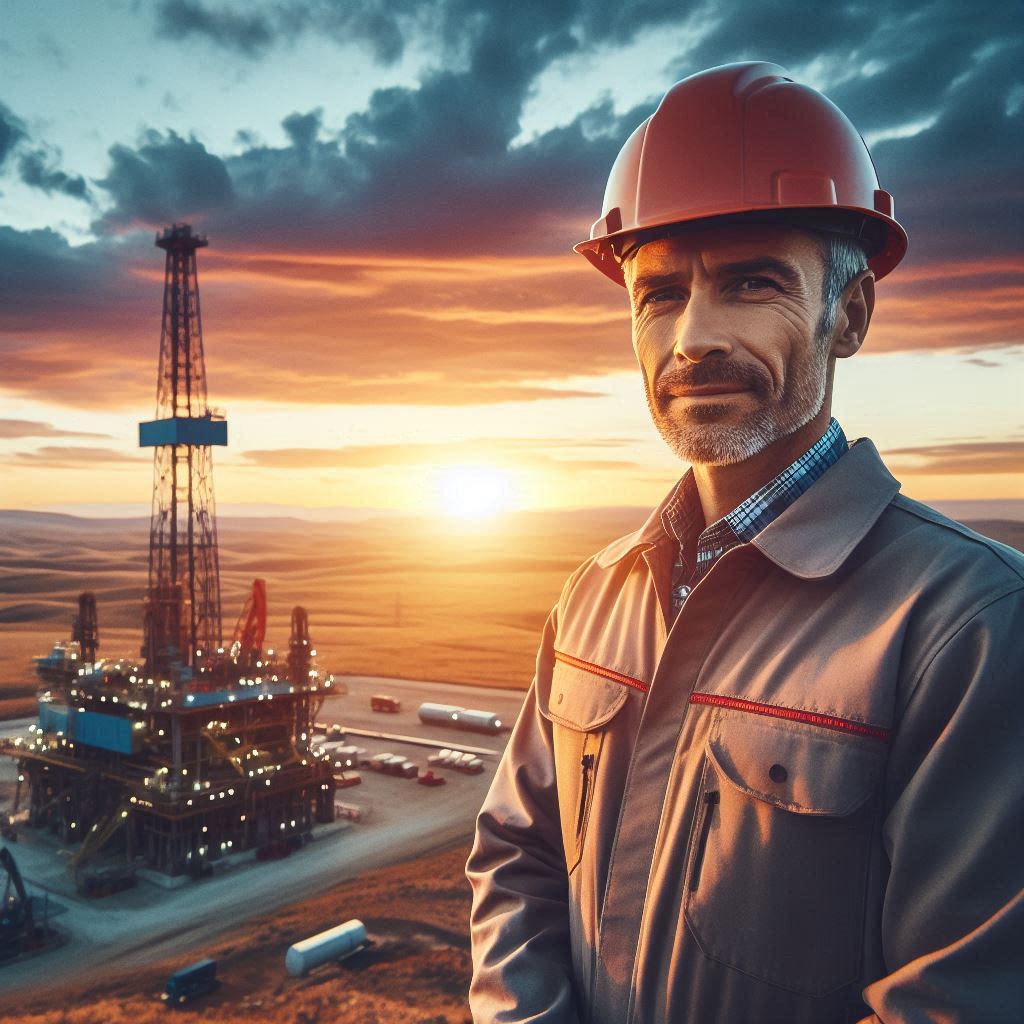Introduction
Transportation engineering involves designing, constructing, and maintaining transportation systems for efficient movement.
Staying updated on future trends is crucial for ensuring transportation systems remain safe, sustainable, and efficient.
Incorporating cutting-edge technology and innovative solutions can optimize transportation infrastructure for future needs.
Understanding emerging trends in transportation engineering allows professionals to adapt and address evolving challenges.
Implementing new strategies can improve traffic flow, reduce environmental impacts, and enhance overall transportation networks.
Enhancing communication and collaboration within the transportation industry can facilitate the exchange of ideas and best practices.
Investing in research and development of new technologies can lead to more advanced and cost-effective transportation solutions.
Engaging with policymakers and stakeholders is essential for shaping future transportation policies and regulations.
Embracing diversity and inclusivity in transportation planning can lead to more equitable and accessible transportation systems.
Continuing education and professional development are essential for transportation engineers to stay at the forefront of industry trends.
Overall, staying informed and proactive in adopting future trends is key to advancing transportation engineering for a sustainable future.
Integration of technology in transportation
Advancements in Autonomous Vehicles
Autonomous vehicles are transforming transportation with their advanced technology.
These self-driving cars promise to enhance safety and reduce traffic accidents.
They use sophisticated sensors and algorithms to navigate roads and respond to their environment.
As these vehicles become more prevalent, they will integrate seamlessly with existing transit options.
Autonomous vehicles will also contribute to reduced congestion by optimizing driving patterns and improving traffic flow.
Their widespread adoption could revolutionize how we approach urban mobility and personal transportation.
Use of Artificial Intelligence for Traffic Management
Artificial intelligence (AI) plays a crucial role in modern traffic management.
AI systems analyze vast amounts of traffic data to optimize signal timings and reduce congestion.
These systems can predict traffic patterns and adjust signals in real-time, improving overall traffic flow.
AI-driven traffic management reduces delays and enhances safety by preventing accidents.
As AI technology evolves, it will enable smarter and more responsive transportation networks.
This innovation will help cities manage growing transportation demands more effectively.
Impact of Internet of Things (IoT) on Transportation Systems
The Internet of Things (IoT) is revolutionizing transportation systems through connectivity and data sharing.
IoT devices collect and transmit data from various sources, including vehicles, infrastructure, and traffic signals.
This data helps in monitoring traffic conditions and predicting potential issues.
IoT-enabled systems enhance communication between vehicles and infrastructure, improving safety and efficiency.
Real-time updates on traffic and transit conditions allow for better route planning and decision-making.
The integration of IoT in transportation systems contributes to smarter, more responsive urban mobility.
Read: Biomedical Engineering: Regulatory Affairs
Sustainable transportation initiatives
Development of Electric and Hybrid Vehicles
The development of electric and hybrid vehicles is revolutionizing the automotive industry.
These vehicles offer an alternative to traditional gasoline-powered cars.
Electric vehicles (EVs) run entirely on electricity, while hybrids combine electric and gasoline power.
This innovation leads to significant reductions in greenhouse gas emissions.
As battery technology improves, EVs become more affordable and have longer ranges.
Automakers are investing heavily in these technologies to meet regulatory requirements and consumer demand.
The growth of this sector highlights a shift towards cleaner, more sustainable transportation solutions.
Implementation of Renewable Energy Sources in Transportation
The implementation of renewable energy sources is crucial for sustainable transportation.
Solar, wind, and hydropower can be harnessed to power electric vehicles and public transit systems.
Integrating these energy sources helps reduce dependence on fossil fuels and lowers overall emissions.
Many cities are exploring ways to incorporate renewable energy into their transportation networks.
For example, solar panels on bus shelters or charging stations can provide clean energy.
This transition not only benefits the environment but also promotes energy security and reduces costs in the long run.
Importance of Reducing Carbon Footprint in the Industry
Reducing the carbon footprint in the transportation industry is vital for combating climate change.
Transportation accounts for a significant portion of global greenhouse gas emissions.
By adopting cleaner technologies and sustainable practices, the industry can make a substantial impact.
This includes transitioning to electric and hybrid vehicles, improving public transit, and expanding bike-sharing programs.
Every effort to reduce emissions contributes to a healthier planet and more sustainable future.
Embracing these changes helps meet climate goals and ensures a better quality of life for future generations.
Read: Graduate Studies in Biomedical Engineering
Smart Transportation Infrastructure
As we look into the future trends in transportation engineering, one of the key areas of focus is the development of smart transportation infrastructure.
This involves the integration of technology into the design and management of transportation systems to improve efficiency, safety, and sustainability.
Utilization of Smart Sensors for Monitoring Traffic Flow
Smart sensors play a crucial role in monitoring traffic flow and collecting real-time data on road conditions.
These sensors are equipped with advanced technology that can detect vehicles, pedestrians, and other elements on the road, providing valuable insights for traffic management.
By using smart sensors, transportation engineers can analyze traffic patterns, identify congestion hotspots, and optimize traffic signals to improve overall traffic flow.
This data-driven approach allows for proactive decision-making and better allocation of resources to enhance the overall transportation experience.
Development of Smart Roads and Bridges
In addition to smart sensors, the development of smart roads and bridges is paving the way for a more connected and efficient transportation network.
These smart infrastructure elements are embedded with sensors, communication devices, and other technologies that enhance their functionality and performance.
Smart roads are equipped with features like intelligent signage, lane departure warning systems, and vehicle-to-infrastructure communication capabilities.
These enhancements not only improve traffic safety but also enable efficient traffic management and optimized travel routes for motorists.
Similarly, smart bridges utilize sensors to monitor structural health, load capacity, and environmental conditions.
This data-driven approach allows engineers to assess bridge conditions in real-time, predict maintenance needs, and ensure the safety and reliability of these critical transportation assets.
Incorporation of Smart Transportation Systems in Urban Planning
As urban populations continue to grow, the integration of smart transportation systems in urban planning becomes essential.
These systems leverage technology to enhance mobility, accessibility, and sustainability in urban environments, addressing the challenges of traffic congestion, pollution, and limited infrastructure capacity.
Smart transportation systems encompass a wide range of initiatives, including intelligent traffic management systems, dynamic routing algorithms, bike-sharing programs, and integrated public transportation networks.
By incorporating these smart solutions into urban planning initiatives, cities can create seamless and efficient transportation ecosystems that cater to the needs of diverse populations.
In general, the implementation of smart transportation infrastructure represents a significant advancement in transportation engineering.
By leveraging technology and data-driven solutions, engineers can revolutionize the way we design, manage, and experience transportation systems, paving the way for a more connected, efficient, and sustainable future.
Read: Networking Tips for Biomedical Engineers

Shift towards alternative modes of transportation
Growing Popularity of Bike-Sharing and Ride-Sharing Services
The future of urban mobility increasingly revolves around the growing popularity of bike-sharing and ride-sharing services.
Bike-sharing programs offer a flexible, cost-effective way to navigate cities.
By providing easy access to bicycles, these services reduce dependence on cars and lower traffic congestion.
Users benefit from a convenient and sustainable transport option for short trips.
Similarly, ride-sharing services, facilitated through apps, connect passengers with drivers.
This system offers a practical alternative to traditional taxis, enhancing urban mobility.
Both bike-sharing and ride-sharing contribute to reducing carbon emissions and improving overall transportation efficiency.
Public Transportation Systems
As urban populations swell, there is a strong emphasis on enhancing public transportation systems.
Cities are focusing on improving public transit to meet the rising demand for efficient and reliable transport.
Investing in modern buses, trains, and subways ensures that these systems can accommodate growing numbers of passengers.
Integrating smart technologies into public transportation helps optimize routes and schedules.
This results in a more efficient and user-friendly experience for commuters.
Expanding and modernizing public transit not only improves mobility but also promotes sustainability.
Efficient public transportation systems are crucial for reducing environmental impact and managing urban congestion.
Rise of Electric Scooters as a Mode of Transportation
The rise of electric scooters is transforming urban transportation.
These scooters are gaining popularity due to their convenience and environmental benefits.
They provide a quick, fun, and eco-friendly option for short-distance travel.
Electric scooters are ideal for bridging the gap between public transit stops and final destinations.
Their low cost and ease of use make them an attractive choice for many users.
Cities are increasingly adopting electric scooter-sharing programs, integrating them into existing transportation networks.
This integration helps alleviate congestion and promotes greener travel alternatives.
Electric scooters offer a practical solution for modern urban mobility challenges.
Read: Biomedical Engineer: Working in Healthcare Tech
Enhanced safety measures in transportation engineering
Integration of Advanced Safety Technologies in Vehicles
Safety remains a paramount concern as transportation technology advances.
The integration of advanced safety technologies in vehicles is crucial.
Modern cars now feature automatic braking, lane-keeping assist, and adaptive cruise control.
These technologies help prevent accidents and make driving safer.
Future vehicles will likely incorporate even more sophisticated safety systems, including advanced driver assistance systems (ADAS) and real-time hazard detection.
Implementation of Smart Traffic Signals to Reduce Accidents
Smart traffic signals are emerging as a solution to reduce accidents and improve traffic flow.
These signals use real-time data to adjust their timing based on traffic conditions.
By optimizing light changes, they can reduce congestion and minimize the likelihood of collisions.
This technology can also prioritize emergency vehicles and public transportation, ensuring they move efficiently through traffic.
The widespread implementation of smart traffic signals could significantly enhance urban mobility and safety.
Transform Your Career Today
Unlock a personalized career strategy that drives real results. Get tailored advice and a roadmap designed just for you.
Start NowFocus on Developing Crash-Resistant Infrastructure
Developing crash-resistant infrastructure is another key focus in modern transportation engineering.
Cities and highways are now incorporating barriers, reinforced guardrails, and impact-absorbing materials.
These measures aim to protect drivers and passengers in the event of an accident.
Additionally, improved road designs and better signage contribute to overall safety.
Future infrastructure will likely include more intelligent features, such as sensors that alert drivers to potential hazards and automatic systems that manage traffic in real-time.
Transportation engineering is innovating rapidly to accommodate these advancements.
New infrastructure will be needed to support hyperloop systems and flying cars.
Cities may need to build special lanes or tubes for hyperloop pods.
Additionally, vertiports could become common for flying car operations.
These developments will require careful planning and investment in smart infrastructure.
Read: Biomedical Engineering: Industry Outlook 2024
You Might Also Like: Top Industries Hiring Computer Engineers Today
Impact of big data analytics on transportation engineering
Use of Data Analytics for Predicting Traffic Patterns
Data analytics is becoming crucial for predicting traffic patterns.
By analyzing vast amounts of traffic data, engineers can forecast congestion and optimize routes.
Real-time data helps in managing traffic flow more effectively.
Advanced algorithms can predict peak traffic times and suggest alternate routes to drivers.
This proactive approach minimizes delays and enhances overall traffic management.
Implementation of Predictive Maintenance for Transportation Systems
Predictive maintenance is transforming how we manage transportation infrastructure.
By monitoring the condition of assets, engineers can predict when maintenance is needed.
This approach prevents breakdowns and extends the lifespan of equipment.
Sensors and data analytics help identify potential issues before they become critical.
Implementing predictive maintenance reduces downtime and keeps transportation systems running smoothly.
Importance of Data-Driven Decision-Making in the Field
Data-driven decision-making is essential in modern transportation engineering.
By relying on accurate data, engineers make informed decisions about infrastructure and technology.
This approach enhances efficiency and safety in transportation systems.
Data helps in evaluating the effectiveness of new technologies and strategies.
It ensures that investments are made based on solid evidence rather than assumptions.
Transportation engineering is innovating rapidly to accommodate these advances.
New infrastructure will be needed to support hyperloop systems and flying cars.
Cities may need to build special lanes or tubes for hyperloop pods.
Additionally, vertiports could become common for flying car operations.
These developments will require careful planning and investment in smart infrastructure.
Autonomous vehicles are another key area of innovation.
Self-driving cars use advanced sensors and AI to navigate roads safely.
They promise to reduce accidents caused by human error and improve traffic flow.
Integration with smart traffic management systems could enhance their efficiency even further.
As technology progresses, we can expect autonomous vehicles to become a standard part of our transportation landscape.
You Might Also Like: Common Tools for Industrial Machinery Mechanics
Find Out More: Quality Control Inspector: Roles and Responsibilities
Growth in Hyperloop and Other Futuristic Transportation Concepts
Exploring the Potential of Hyperloop Technology for High-Speed Travel
Hyperloop technology is on the brink of transforming high-speed travel.
This innovative concept, originally envisioned by Elon Musk, uses low-pressure tubes and magnetic levitation to achieve unprecedented speeds.
Prototypes from several companies are already in development, with test runs showcasing speeds approaching 760 mph.
Such advancements could revolutionize intercity travel by slashing journey times and increasing efficiency.
With ongoing research and testing, the hyperloop could soon become a viable option for rapid long-distance travel.
Development of Flying Cars and Drones for Transportation
Flying cars, once a sci-fi fantasy, are steadily becoming a reality.
Several companies are now focused on creating vehicles that can take off and land vertically, bridging the gap between cars and aircraft.
These flying cars could alleviate urban congestion and offer new modes of personal transport.
Innovations in electric propulsion and autonomous flight systems are making these vehicles more feasible.
Alongside flying cars, drones are rapidly evolving to offer efficient delivery solutions.
Drones are being tested for a variety of applications, from parcel delivery to emergency medical transport.
They promise to streamline logistics and improve response times in critical situations.
Both flying cars and drones represent a significant leap forward in personal and commercial transportation.
Innovation in Transportation Engineering to Revolutionize Travel
Transportation engineering is at the forefront of this transformation, driven by technological advancements.
New infrastructure is necessary to support the deployment of hyperloop systems, flying cars, and drones.
For hyperloops, cities may need to construct specialized tubes or tunnels.
Flying cars could require new vertiports for takeoff and landing.
Drones might need dedicated air corridors to ensure safe operations.
These innovations in infrastructure will require substantial investment and careful planning.
Autonomous vehicles are also reshaping the transportation landscape.
Self-driving cars, equipped with sophisticated sensors and AI, offer the promise of safer and more efficient travel.
They could reduce accidents caused by human error and improve overall traffic flow.
Integration with smart traffic management systems could further enhance their effectiveness.
Overall, the future of transportation engineering is brimming with potential.
Hyperloop technology, flying cars, and drones are poised to revolutionize how we travel.
These innovations will not only make travel faster but also more efficient and versatile.
As we continue to explore and develop these technologies, they will reshape our cities and the way we move through them.
Keeping abreast of these advancements will be crucial as we step into a new era of transportation.
Conclusion
The future of transportation engineering is rapidly evolving with advancements in technology and sustainability.
Autonomous vehicles, electric propulsion, and smart infrastructure are transforming the industry.
These innovations promise to enhance safety, efficiency, and environmental impact.
The importance of adapting to these trends cannot be overstated.
As technology advances, transportation engineers must embrace new methods and tools to stay relevant.
Understanding and implementing cutting-edge solutions will ensure that transportation systems remain efficient and sustainable.
Professionals in transportation engineering should continuously seek knowledge and stay informed about emerging trends.
Attending industry conferences, participating in workshops, and engaging with experts are excellent ways to stay updated.
Embracing innovation and integrating new technologies will be crucial for addressing future challenges in transportation.
By staying proactive and adaptable, engineers can contribute to the development of more efficient, safe, and eco-friendly transportation systems.
This commitment to innovation not only supports career growth but also plays a vital role in shaping a sustainable future for transportation engineering.
Therefore, the future of transportation engineering holds exciting opportunities.
It is imperative for professionals to remain engaged with the latest advancements and strive to integrate them into their work.
This approach will ensure that the transportation systems of tomorrow meet the evolving needs of society while promoting sustainability and efficiency.
[E-Books for Sale]
The Big Book of 500 High-Paying Jobs in America: Unlock Your Earning Potential
$19.99 • 500 High-Paying Jobs • 330 pages
Explore 500 high-paying jobs in America and learn how to boost your career, earn more, and achieve success!
See All 500 High-Paying Jobs of this E-Book
1001 Professions Without a Degree: High-Paying American Jobs You Can Start Now
$19.99 • 1001 Professions Without a Degree • 174 pages
Discover 1001 high-paying jobs without a degree! Unlock career tips, skills, and success strategies for just $19.99!




